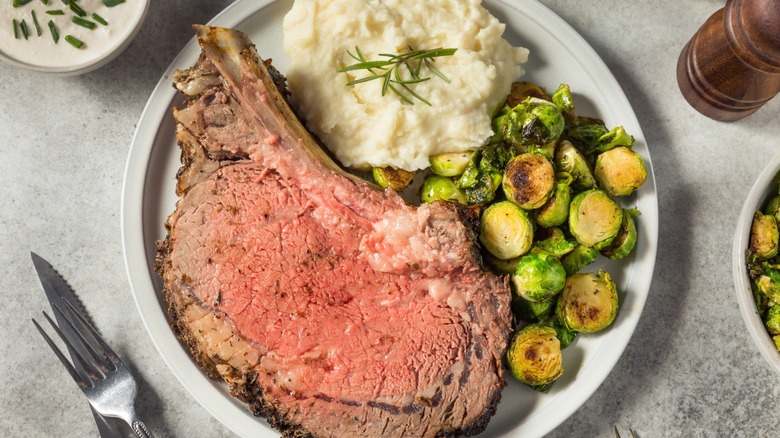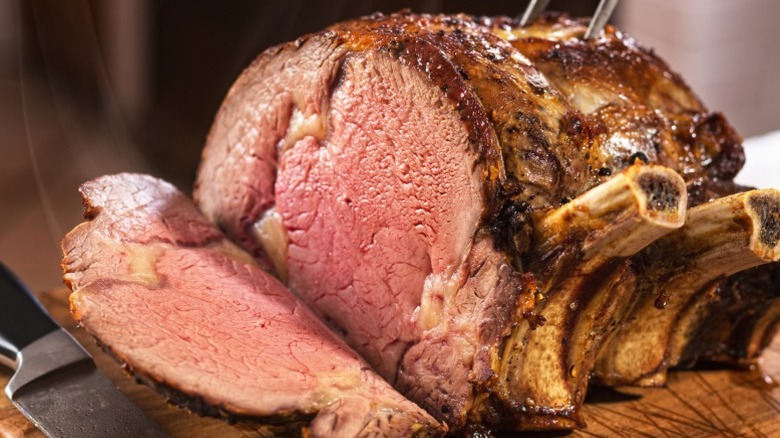Why Prime Rib Tastes Better At Restaurants — And How They Do It
"Why does the food I make at home never taste as good as it does in restaurants?" You've probably asked yourself this question if you're a home cook, and at the risk of sounding glib, there is a pretty straightforward answer: Because chefs in restaurants are better at cooking than you are. We don't mean to insult your capabilities, but restaurant chefs have devoted their lives to an intensely demanding craft, even if they didn't go to a fancy culinary school. On top of their culinary expertise, they generally have access to better ingredients and better equipment, too. But even if you can't get your prime rib to taste just like how it does at places like House of Prime Rib, the San Francisco restaurant that serves up massive portions of meat, these pro tips will help you get pretty darn close: In short, season the heck out of high-quality meat.
We asked Jonathan Bautista, Executive Chef at Ember & Rye Steakhouse in Carlsbad, California, and he gave us plenty of advice on cooking prime rib. "Personally, I wet brine my prime rib for 48 hours and let it air dry in the refrigerator for 24 hours prior to doing anything with it," he said. That means submerging it in a salt water solution before letting it dry out in the fridge, imparting rich, savory flavor to your roast.
Speaking of which, don't skimp on quality if you want the best results every time. "Meat quality should be no lower than choice grade, while prime grade is the best for optimal marbling," Bautista said. Choice grade is slightly lower-quality than prime grade, but both will do you proud on the dinner table. Look for good marbling when shopping for prime rib for a good balance of taste and texture.
Season, truss, and cook your prime rib
Once you've brined your prime rib, it's time to season, and chef Jonathan Bautista advises not to be stingy with it. "Seasoning the outside is key: I use salt, coarse black pepper, garlic powder, onion powder, dried thyme and smoked paprika," he told us. You can omit or add as you please, of course — maybe you're a fiend for garlic, or maybe you have a lifelong grudge against dried thyme — but this is how at least one pro does it. You might also want to tie your roast. "Trussing your prime rib with butchers' twine prior to cooking [will] ensure an even doneness," Bautista said. It will also make it easier to slice your prime rib once cooked.
Now that all of that is sorted, it's time to cook, which Bautista informed us is fairly straightforward. "The cooking process is rather simple: A nice, hard sear on the outside and a low and slow cook (250 degrees Fahrenheit) until your desired temperature," he said. "I like mine medium all the way through, so I cook it until the internal temperature is 128 to 130 degrees Fahrenheit." Use an instant-read thermometer to ensure accuracy.
It's also important to let your meat rest for around half an hour after cooking. "The prime rib will carry over at least 10 degrees as it sits and rests, so you want to remove the roast a temperature under — in this case, medium rare to achieve a medium finish," Bautista explained. If you do it right, the result will be rosy, tender, utterly flavorful prime rib that you just might like better than restaurant fare — after all, you made it yourself.

